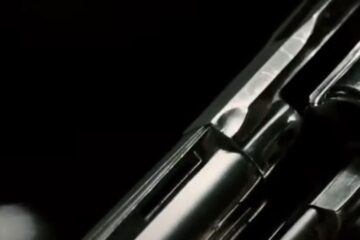All About Modern Cartridge Components
There are four parts to any modern pistol cartridge: case, powder, primer (or priming compound) and bullet.
Case
Modern cartridge cases are generally made of brass (sometimes steel); some are nickel-plated. The case consists of a body, which terminates at one end in a neck and mouth, and, at the other, in a thick head. A center-fire cartridge case head contains a primer pocket that holds the primer, and a flash hole that conveys the primer spark through the web of the case to the powder charge. The head also contains a headstamp of the cartridge name. A rimfire case head has no primer, but instead has priming compound located in a fold in the case rim.

- Activate Your Own Stem Cells & Reverse The Aging Process - Choose "Select & Save" OR Join, Brand Partner & Select Silver To Get Wholesale Prices
- Get your Vitamin B17 & Get 10% Off With Promo Code TIM
- How To Protect Yourself From 5G, EMF & RF Radiation
- Protect Your Income & Retirement Assets With Gold & Silver
- Grab This Bucket Of Heirloom Seeds & Get Free Shipping With Promo Code TIM
- Here’s A Way You Can Stockpile Food For The Future
- Stockpile Your Ammo & Save $15 On Your First Order
- Preparing Also Means Detoxifying – Here’s One Simple Way To Detoxify
There are several types of cases, based on the shapes of the body and head. Case bodies are either of bottleneck design, with a neck smaller than the body and a pronounced shoulder where they meet, or straight, with a body about the same size as the neck. Case heads come in five configurations. Rimmed cases have a protruding rim that is grasped by the pistol’s extractor to remove it from the chamber. Semi-rimmed cases have a rim that is only slightly larger than the body diameter, and an extractor groove that allows the extractor a better grip. Rimless cases have a deep extractor groove that creates a rim the same diameter as the case body, while rebated-rimless cases have a rim smaller in diameter than the body. Finally, belted rimless cases are simply rimless cases with a thickened belt directly above the extractor groove. These are used for magnum cartridges (cartridges having a larger-than-normal case capacity to develop higher velocity).

Regardless of its design, the case performs the same functions. It contains the other cartridge components; it locates the bullet in relation to the bore and rifling; and it provides a combustion chamber for uniform ballistics. Upon cartridge ignition, it contains the pressure created by propellant gases, and, perhaps most importantly, it expands tightly against the chamber walls, preventing gas leakage to the rear. Finally, after the bullet leaves the muzzle and gas pressure drops, the case springs back slightly from the chamber walls, allowing it to be easily extracted.
Primer
The primer creates the spark that ignites the powder charge. It is essentially a small metal cup containing a layer of pressure-sensitive priming compound, over which is placed an anvil whose pointed tip bears against this compound. When the trigger is pulled, the firing pin sharply hits and indents the primer cup, pushing it against the anvil. This, in turn, compresses the priming compound, igniting it and creating a spark that goes through a flash hole to the powder. Such primers are located in the center of the case head; cartridges so configured are thus called center-fire cartridges.

Some cartridges lack a central primer, but instead have a thin layer of priming compound that coats the bottom of the inside of the case, including the portion of the case that is folded to create a rim. With such cartridges, the firing pin hits the exposed case rim, indenting the thin metal and compressing the priming compound to create a spark. Today’s rimfire cartridges are limited to relatively low-power .17- and .22-cal. rounds.
Powder
Though all firearms once used black powder to propel the bullet, ammunition for modern arms uses smokeless powder, which is made primarily of nitrocellulose (so-called single-base powders) or a combination of nitrocellulose and nitroglycerin (double-base powders). When the powder is ignited by the primer, it is rapidly converted to a large volume of hot, expanding gas that greatly increases the pressure inside the case, and pushes the bullet down the barrel at high velocity.
Smokeless powder is a propellant that burns at a controlled rate. Thus, powders for different purposes have different compositions, coatings and granule shapes (and sizes) to produce optimal performance within pressure limits.
Bullet

Pistol bullets may have a variety of shapes and types of construction. Most are of lead or jacketed lead construction. In the former, the bullet is cast or swaged to the proper diameter and shape. In the latter type of construction, the bullet has a lead core surrounded by a thin copper jacket. Jacketed lead bullets can be driven to higher velocities and can be designed to give optimum terminal performance for the intended purpose. Additionally, some pistol bullets for hunting or self-defense use are also made out of a solid copper alloy.
Bullet performance in both the air and at the target depends upon bullet construction and shape.
Article by NRA Staff














